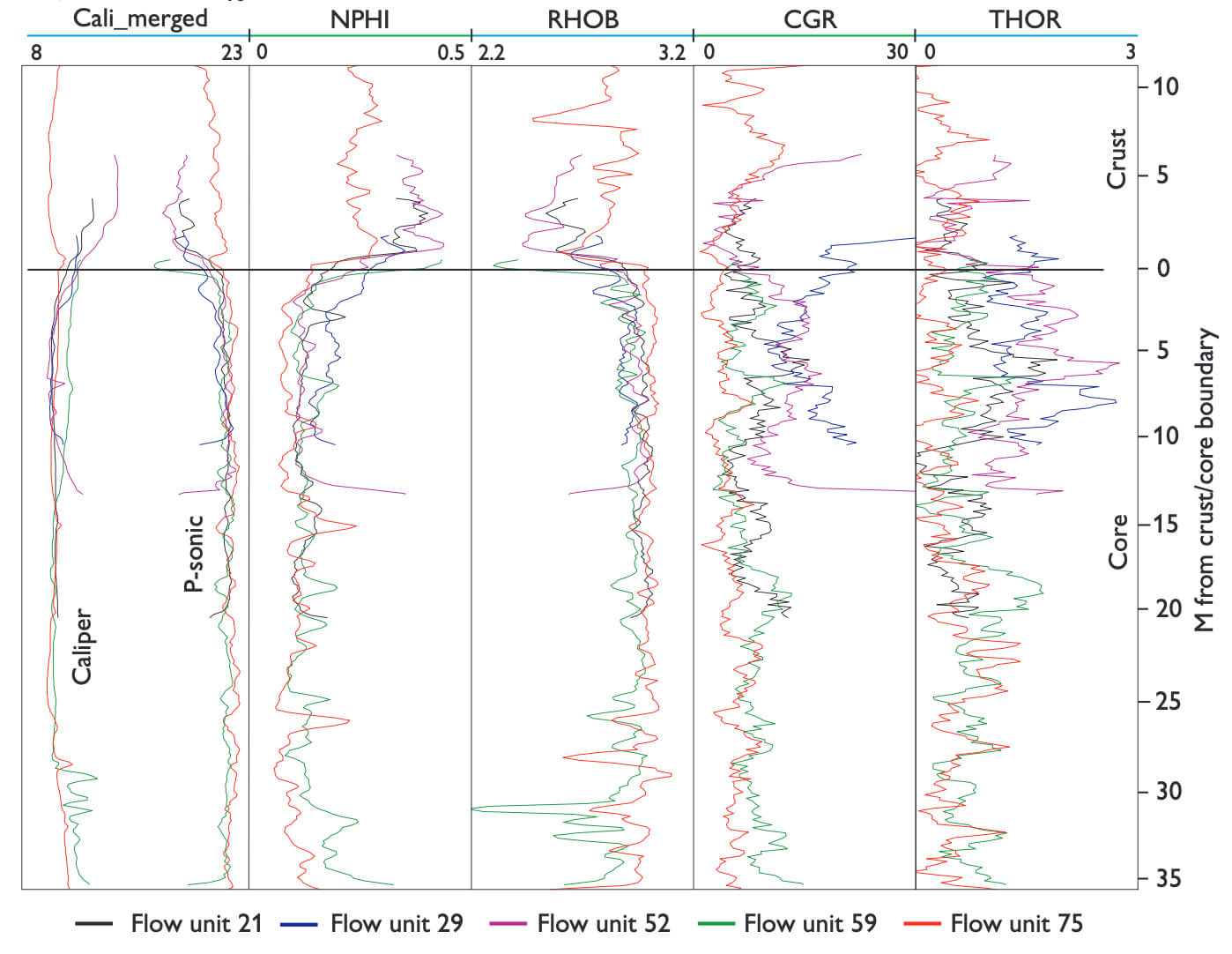
How to Cite
Share
Abstract
The present study shows that it is possible to use conventional borehole logs to perform a detailed lithological/stratigraphical division of a column of subaerially extruded basalt. A stratigraphical division of the subaerial flood basalts penetrated by the Lopra-1/1A well has been carried out using new wire-line logging data measured in 1996 in the interval 200–2489 m depth. Resistivity data acquired in the interval 200–2178 m depth during 1981 after the initial drilling of the Lopra-1 well have also been incorporated. Eighty-six individual flow units, 18 compound flows and two dolerite dykes have been identified by combining the NPHI porosity, RHOB density, P-, S- and Stonely-sonic transit time, calliper and resistivity logs. Fifty-two sedimentary/tuffaceous layers have also been identified using the CGR and SGR gamma ray and potassium logs in combination with the aforementioned logs. Within the flow units, sonic velocity, density and resistivity are highest in the core where porosity is lowest. This relation is reversed in the uppermost and basal zones of the flow units. The sonic velocity in the core seems to be independent of the thickness of the flow unit. Porous zones seem abundant in some cores and the total section of cores containing porous zones constitutes more than 70% of the thickness of its flow unit, but where porous zones are absent the core makes up only roughly 50% of the thickness of the flow. It is suggested that the flow units with porous cores represent aa flows (88% of the flow units) and the others pahoehoe flows (12% of the flow units). The log pattern of the flow units (crust, core and basal zone) is similar to log patterns reported from other basalt plateaux. However the patterns in Lopra-1/1A show a larger variation than elsewhere, suggesting that the flow units are more complex vertically than previously thought. Statistical analysis of P-, S- and Stonely-waves, RHOB, NPHI, resistivity, gamma and calliper logs has been carried out. Cross-plots based on the lithological divisions have been produced that show a pronounced reduction in scattering versus P-sonic transit time and P- and S-sonic, RHOB and NPHI logs correlate with depth. The geochemical logs do not reflect the cyclic structure of the flow units and probably represent the primary composition of the basalt. The thorium log especially indicates flow units with high and low radioactivity and it is suggested that a minimum of 36 flow fields form the logged part of the lower basalt series. Dolerite units described in previous works have been confirmed based on the combined interpretation of wire-line logs. The log data suggest that the subaerially extruded basalt has its base at a depth of approximately 2490 m and that a hyaloclastite succession is found below that depth. The transition from subaerially extruded basalt to hyaloclastite produces a negative acoustic impedance and it is found that the transition corresponds to a negative reflection interpreted on VSP surveys from 1988 and 1994.
How to Cite
Share
Downloads
Editors: James A. Chalmers and Regin Waagstein
The Faroe Islands in the northern North Altantic consist primarily of Palaeogene eruptive volcanic rocks. Two research boreholes were drilled in 1980 and 1981 on the islands, the deeper of which, Lopra-1, extended 2 km into the unexposed part of the volcanic succession.
Exploration for [...]










